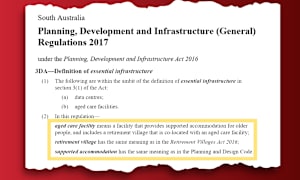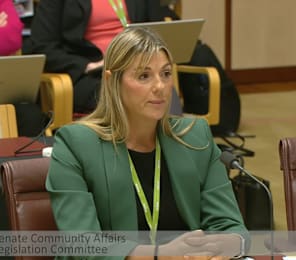This week marks two years since the tabling of the Royal Commission into Aged Care Quality and Safety’s 2,800-page ‘Care, Dignity, and Respect’ Final Report in Parliament and it feels like the future of the aged care sector is at last falling into place.
The operators we talk to and the actions we see indicate an increased confidence in the shape of the future aged care landscape – and operators are deciding if they want to be part of it or not.
The last year has seen its recommendations continue roll out under the Labor Government – see Aged Care Minister Anika Wells’ op-ed below.
While the pace of the reform and the consultation process has come in for criticism from providers – and certainly, there is a degree of change fatigue among aged care staff and executives – the new reforms are starting to be bedded down.
There is a renewed sense of optimism among the providers that we speak to.
For many in residential care, the new Australian National Aged Care Classification (AN-ACC) funding model is delivering higher levels of funding in the six months since its inception.
The star ratings implemented in December last year are now up and running – good or bad.
Providers are gearing up for the introduction of the mandated care minutes in October.
While operators are still in the dark on some of the big-picture reforms – the impact of mandated care minutes, the new home care program, and the new Independent Hospital and Aged Care Pricing Authority (IHACPA) – but there is now a greater sense of what the future will hold.
Boards and executives have been able to have the discussions required about the future of their businesses – asking the big questions:
Can we cope with the new care minutes?
Will we be able to achieve the scale required to maintain financial viability?
Do we have the cash to invest in our brand, people and new products and services to meet the changing market?
We have seen the results of some of those decision-making processes in recent weeks.
Australian Unity is reviewing its residential care operations – will they stay operators of residential care or will they bail - with a report expected mid-year.
Consolidation
Larger private residential care operators Japara, Allity and now McKenzie Aged Care have all been snapped up by Calvary Health Care and Bolton Clarke respectively. Smaller private operators like the Padman family have decided it is all to hard and sold out to Estia seven years after their relaunch.
 A senior leader told SATURDAY last year that they saw 6,000 to 7,000 beds as the preferred number of aged care beds to be financially viable. And Simon Miller (pictured) is taking on Presbyterian Aged Care and a 50% stake in LDK Seniors’ Living.
A senior leader told SATURDAY last year that they saw 6,000 to 7,000 beds as the preferred number of aged care beds to be financially viable. And Simon Miller (pictured) is taking on Presbyterian Aged Care and a 50% stake in LDK Seniors’ Living.
BaptistCare NSW & ACT CEO Charles Moore is also targeting 4,000 to 4,000 aged care beds and independent living units with a reweighting towards retirement villages.
In short, operators are looking for growth – or looking at how they could pull back or even opt out entirely.
Co-contribution
The major question mark that still remains to be resolved is the issue of consumer contributions.
Treasurer Jim Chalmers has consistently pointed to the dire state of the Federal Budget – and that was prior to the war in Ukraine, which has also marked its 12-month anniversary.
With the next Budget due to be handed down in May, you have to ask the question: how much expenditure is likely to be allocated to Defence in the forward estimates – and how much to aged care?
Increasing contributions from older Australians who can afford to fund their aged care services – while supporting those who cannot – remains the only viable solution for delivering the aged care system envisioned by the Royal Commissioners two years ago.
Minister Wells has also penned her thoughts on the two-year anniversary of the Final Report – you can read her op-ed here.










